Featured Articles
Floyd Mayweather, Showtime, and the Nevada State Athletic Commission

Les Moonves has a domestic violence problem. As president and CEO of CBS Corporation, he oversees a vast media empire that includes, among other properties, CBS and Showtime.
CBS is one of the networks that televises National Football League games. The burgeoning NFL domestic violence scandal isn’t adversely affecting ratings right now. But there might come a time when corporate advertisers move away from the NFL. That would be bad for CBS.
Meanwhile, Showtime finds itself joined at the hip with Floyd Mayweather by virtue of a six-fight contract. Mayweather has been criminally convicted on three separate occasions for being physically abusive to women. In 2012, he served 63 days in jail for one of these offenses. The Nevada State Athletic Commission didn’t suspend Mayweather’s license to box after any of the convictions, and the sentencing judge delayed the start of Mayweather’s jail term so he could fight Miguel Cotto in Las Vegas on May 5, 2012.
Let’s put that in perspective. Suppose Seattle Seahawks quarterback Russell Wilson had been convicted of battery domestic violence and sentenced to prison last year. And suppose the sentencing judge had deferred the sentence so Wilson could play against the Denver Broncos in the Super Bowl before going to jail. And suppose NFL commissioner Roger Goodell had let Wilson play. That’s the equivalent of what happened with Mayweather in Nevada.
This week, the Mayweather, Showtime, and Nevada State Athletic Commission pathologies collided.
Showtime prides itself on its All Access series that the Showtime website describes as follows: “This documentary series from Emmy-Award-winning Showtime Sports provides viewers with an intimate portrait of some of the most compelling personalities in sports. All Access will take you inside the personal lives of the fighters and behind the scenes of the provocative and often edgy world of boxing with unrestricted access, as only Showtime can.”
As part of the pre-event promotion for the September 13, 2014, pay-per-view fight between Mayweather and Marcos Maidana, Showtime aired a three-part All Access documentary. During the second episode, Sharif Rahman (an amateur boxer and one of former heavyweight champion Hasim Rahman’s sons) was shown taking a vicious beating at the hands of Donovan Cameron in a sparring session at the Mayweather Boxing Club. Sharif’s older brother, Hasim Rahman Jr, then challenged Cameron to get into the ring with him. The All Access documentary showed members of the gym placing bets on the action, while the two men fought for 31 consecutive minutes until Cameron could no longer continue. Mayweather cheered enthusiastically during the battle and said on camera, “The dog house; the rules are you fight till whoever quits. Guys fight to the death. It’s not right, but it’s dog house rules.”
In the same episode of All Access, Mayweather was shown at home, watching as several women rolled joints and smoked marijuana. At one point, he instructed a third party to go to the store and buy more rolling paper because they had run out of paper.
Thereafter, Nevada State Athletic Commission chairman Francisco Aguilar told ESPN.com, “I watched the episodes when they were sent to me by another commissioner. Our main concern is the health and safety of the fighters, and not just on fight night but also in sparring and in training. We want to get a clarification about what happened on All Access. There were situations in sparring sessions that we need to talk about. One thing is to talk about making sure you have two equally paired fighters and that you’re not putting one fighter in danger. The other is the round that went 31 minutes. There is also the marijuana situation in there, and some commissioners are upset about it.”
On September 18, the Nevada State Athletic Commission instructed Mayweather to appear at its September 23 meeting to answer questions regarding the content of the All Access episode. He was not required to take an oath before testifying. That created a loophole through which, were he so inclined, he could testify falsely without exposure to prosecution for perjury.
Mayweather told the commission on September 23 that, contrary to what was represented on All Access, there had been three or four breaks during the 31-minute round and that the marijuana shown in the documentary wasn’t real marijuana but a prop used to engender interest in his lifestyle and help sell pay-per-view buys.
It’s hard to believe that Showtime would stage events like that for inclusion in a documentary. The network is part of a media empire that includes CBS, perhaps the world’s most respected name in news coverage.
Mayweather had an “executive producer” credit for All Access, but his reputation isn’t on the line. The other three executive producers were Ross Greenburg, Jody Heaps, and Jason Bowers. Bowers was also credited as the series director. The prevailing view among industry insiders is that these men have too much integrity to stage scenes in the manner testified to by Mayweather.
Moreover, multiple sources at Showtime have told this writer that Mayweather’s testimony before the Nevada State Athletic Commission was false.
“As you can imagine, it’s a sensitive time right now,” one of these sources said. “People here are angry. The marijuana was real. There was no break in the 31-minute fight. Floyd flat out lied to the commission.”
To date, Showtime executives have declined to comment publicly on Mayweather’s testimony. But this is an instance where “no comment” is an inadequate response. The network owes its subscribers and the viewing public a clarification. Either the All Access scenes were genuine or they were not. That means it’s incumbent upon Showtime management to call in key production personnel, ask them precisely what happened, and review all relevant video evidence. Then Showtime should either (1) apologize publicly for deliberately misleading its subscribers and the general public or (2) state publicly that, upon review, it has confirmed that the All Access presentation of events was accurate.
Meanwhile, the Nevada State Athletic Commission should also follow up on the matter. At a minimum, this would involve (1) requiring Mayweather and the appropriate Showtime personnel to testify under oath, and (2) requesting that subpoenas be issued for all relevant video content.
NSAC executive director Bob Bennett is a former FBI agent. He knows how to investigate something of this nature. And because Bennett is a former FBI agent, the commission will look pretty silly if it comes to light later on that its members were lied to and did nothing about it.
It’s one thing if the Nevada State Athletic Commission accommodates Mayweather by allowing him to fight Miguel Cotto after he has pled guilty to battery domestic violence but not yet served his sentence. That’s a choice, however unfortunate, that the NSAC made freely and knowingly. It’s a very different matter if Mayweather has disrespected the commission and made a mockery of its proceedings by lying to the commissioners.
The credibility of both the Nevada State Athletic Commission and Showtime is at stake. If Mayweather told the truth at the September 23 hearing, then heads should roll at Showtime. And if it was Mayweather who lied, it’s time for the NSAC to say, “Enough is enough!” That would include re-examining Mayweather’s license as a boxer and also the issue of whether Mayweather Promotions is fit to be licensed as a promoter in Nevada.
One assumes that Nevada governor Brian Sandoval (who bears ultimate responsibility for the commission and its actions) will be watching. So will Les Moonves. Either Showtime has deliberately deceived its subscribers and the general public or the five commissioners of the Nevada State Athletic Commission have been played for fools.
Thomas Hauser can be reached by email at thauser@rcn.com. His next book (Thomas Hauser on Boxing) will be published in October by the University of Arkansas Press.
Featured Articles
Arne’s Almanac: The First Boxing Writers Assoc. of America Dinner Was Quite the Shindig
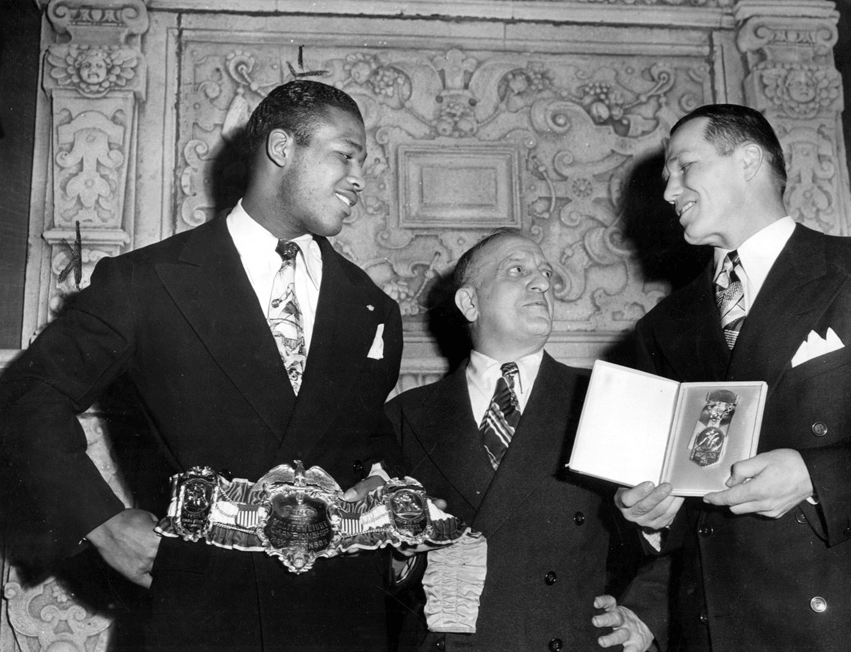
The first annual dinner of the Boxing Writers Association of America was staged on April 25, 1926 in the grand ballroom of New York’s Hotel Astor, an edifice that rivaled the original Waldorf Astoria as the swankiest hotel in the city. Back then, the organization was known as the Boxing Writers Association of Greater New York.
The ballroom was configured to hold 1200 for the banquet which was reportedly oversubscribed. Among those listed as agreeing to attend were the governors of six states (New York, New Jersey, Massachusetts, Pennsylvania, Connecticut, and Maryland) and the mayors of 10 of America’s largest cities.
In 1926, radio was in its infancy and the digital age was decades away (and inconceivable). So, every journalist who regularly covered boxing was a newspaper and/or magazine writer, editor, or cartoonist. And at this juncture in American history, there were plenty of outlets for someone who wanted to pursue a career as a sportswriter and had the requisite skills to get hired.
The following papers were represented at the inaugural boxing writers’ dinner:
New York Times
New York News
New York World
New York Sun
New York Journal
New York Post
New York Mirror
New York Telegram
New York Graphic
New York Herald Tribune
Brooklyn Eagle
Brooklyn Times
Brooklyn Standard Union
Brooklyn Citizen
Bronx Home News
This isn’t a complete list because a few of these papers, notably the New York World and the New York Journal, had strong afternoon editions that functioned as independent papers. Plus, scribes from both big national wire services (Associated Press and UPI) attended the banquet and there were undoubtedly a smattering of scribes from papers in New Jersey and Connecticut.
Back then, the event’s organizer Nat Fleischer, sports editor of the New York Telegram and the driving force behind The Ring magazine, had little choice but to limit the journalistic component of the gathering to writers in the New York metropolitan area. There wasn’t a ballroom big enough to accommodate a good-sized response if he had extended the welcome to every boxing writer in North America.
The keynote speaker at the inaugural dinner was New York’s charismatic Jazz Age mayor James J. “Jimmy” Walker, architect of the transformative Walker Law of 1920 which ushered in a new era of boxing in the Empire State with a template that would guide reformers in many other jurisdictions.
Prizefighting was then associated with hooligans. In his speech, Mayor Walker promised to rid the sport of their ilk. “Boxing, as you know, is closest to my heart,” said hizzoner. “So I tell you the police force is behind you against those who would besmirch or injure boxing. Rowdyism doesn’t belong in this town or in your game.” (In 1945, Walker would be the recipient of the Edward J. Neil Memorial Award given for meritorious service to the sport. The oldest of the BWAA awards, the previous recipients were all active or former boxers. The award, no longer issued under that title, was named for an Associated Press sportswriter and war correspondent who died from shrapnel wounds covering the Spanish Civil War.)
Another speaker was well-traveled sportswriter Wilbur Wood, then affiliated with the Brooklyn Citizen. He told the assembly that the aim of the organization was two-fold: to help defend the game against its detractors and to promote harmony among the various factions.
Of course, the 1926 dinner wouldn’t have been as well-attended without the entertainment. According to press dispatches, Broadway stars and performers from some of the city’s top nightclubs would be there to regale the attendees. Among the names bandied about were vaudeville superstars Sophie Tucker and Jimmy Durante, the latter of whom would appear with his trio, Durante, (Lou) Clayton, and (Eddie) Jackson.
There was a contraction of New York newspapers during the Great Depression. Although empirical evidence is lacking, the inaugural boxing writers dinner was likely the largest of its kind. Fifteen years later, in 1941, the event drew “more than 200” according to a news report. There was no mention of entertainment.
In 1950, for the first time, the annual dinner was opened to the public. For $25, a civilian could get a meal and mingle with some of his favorite fighters. Sugar Ray Robinson was the Edward J. Neil Award winner that year, honored for his ring exploits and for donating his purse from the Charlie Fusari fight to the Damon Runyon Cancer Fund.
There was no formal announcement when the Boxing Writers Association of Greater New York was re-christened the Boxing Writers Association of America, but by the late 1940s reporters were referencing the annual event as simply the boxing writers dinner. By then, it had become traditional to hold the annual affair in January, a practice discontinued after 1971.
The winnowing of New York’s newspaper herd plus competing banquets in other parts of the country forced Nat Fleischer’s baby to adapt. And more adaptations will be necessary in the immediate future as the future of the BWAA, as it currently exists, is threatened by new technologies. If the forthcoming BWAA dinner (April 30 at the Edison Ballroom in mid-Manhattan) were restricted to wordsmiths from the traditional print media, the gathering would be too small to cover the nut and the congregants would be drawn disproportionately from the geriatric class.
Some of those adaptations have already started. Last year, Las Vegas resident Sean Zittel, a recent UNLV graduate, had the distinction of becoming the first videographer welcomed into the BWAA. With more and more people getting their news from sound bites, rather than the written word, the videographer serves an important function.
The reporters who conducted interviews with pen and paper have gone the way of the dodo bird and that isn’t necessarily a bad thing. A taped interview for a “talkie” has more integrity than a story culled from a paper and pen interview because it is unfiltered. Many years ago, some reporters, after interviewing the great Joe Louis, put words in his mouth that made him seem like a dullard, words consistent with the Sambo stereotype. In other instances, the language of some athletes was reconstructed to the point where the reader would think the athlete had a second job as an English professor.
The content created by videographers is free from that bias. More of them will inevitably join the BWAA and similar organizations in the future.
Photo: Nat Fleischer is flanked by Sugar Ray Robinson and Tony Zale at the 1947 boxing writers dinner.
Featured Articles
Gabriela Fundora KOs Marilyn Badillo and Perez Upsets Conwell in Oceanside
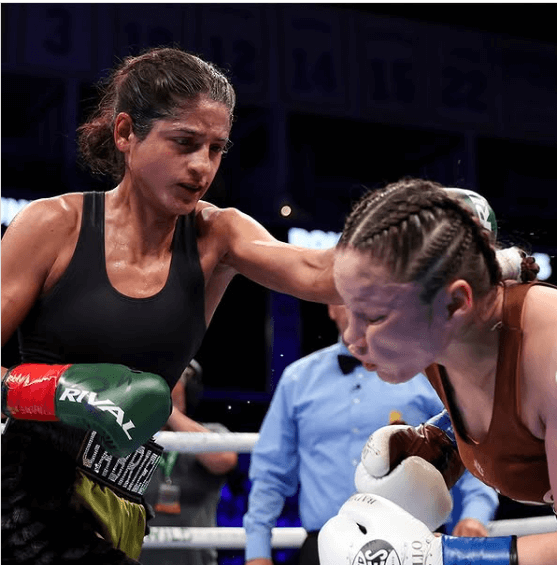
It was just a numbers game for Gabriela Fundora and despite Mexico’s Marilyn Badillo’s elusive tactics it took the champion one punch to end the fight and retain her undisputed flyweight world title by knockout on Saturday.
Will it be her last flyweight defense?
Though Fundora (16-0, 8 KOs) fired dozens of misses, a single punch found Badillo (19-1-1, 3 KOs) and ended her undefeated career and first attempt at a world title at the Frontwave Arena in Oceanside, California.
Fundora, however, proves unbeatable at flyweight.
The champion entered the arena as the headliner for the Golden Boy Promotion show and stepped through the ropes with every physical advantage possible, including power.
Mexico’s Badillo was a midget compared to Fundora but proved to be as elusive as a butterfly in a menagerie for the first six rounds. As the six-inch taller Fundora connected on one punch for every dozen thrown, that single punch was a deadly reminder.
Badillo tried ducking low and slipping to the left while countering with slashing uppercuts, she found little success. She did find the body a solid target but the blows proved to be useless. And when Badillo clinched, that proved more erroneous as Fundora belted her rapidly during the tie-ups.
“She was kind of doing her ducking thing,” said Fundora describing Badillo’s defensive tactics. “I just put the pressure on. It was just like a train. We didn’t give her that break.”
The Mexican fighter tried valiantly with various maneuvers. None proved even slightly successful. Fundora remained poised and under control as she stalked the challenger.
In the seventh round Badillo seemed to take a stand and try to slug it out with Fundora. She quickly was lit up by rapid left crosses and down she went at 1:44 of the seventh round. The Mexican fighter’s corner wisely waved off the fight and referee Rudy Barragan stopped the fight and held the dazed Badillo upright.
Once again Fundora remained champion by knockout. The only question now is will she move up to super flyweight or bantamweight to challenge the bigger girls.
Perez Beats Conwell.
Mexico’s Jorge “Chino” Perez (33-4, 26 KOs) upset Charles Conwell (21-1, 15 KOs) to win by split decision after 12 rounds in their super welterweight showdown.
It was a match that paired two hard-hitting fighters whose ledgers brimmed with knockouts, but neither was able to score a knockdown against each other.
Neither fighter moved backward. It was full steam ahead with Conwell proving successful to the body and head with left hooks and Perez connecting with rights to the head and body. It was difficult to differentiate the winner.
Though Conwell seemed to be the superior defensive fighter and more accurate, two judges preferred Perez’s busier style. They gave the fight to Perez by 115-113 scores with the dissenter favoring Conwell by the same margin.
It was Conwell’s first pro loss. Maybe it will open doors for more opportunities.
Other Bouts
Tristan Kalkreuth (15-1) managed to pass a serious heat check by unanimous decision against former contender Felix Valera (24-8) after a 10-round back-and-forth heavyweight fight.
It was very close.
Kalkreuth is one of those fighters that possess all the physical tools including youth and size but never seems to be able to show it. Once again he edged past another foe but at least this time he faced an experienced fighter in Valera.
Valera had his moments especially in the middle of the 10-round fight but slowed down during the last three rounds.
One major asset for Kalkreuth was his chin. He got caught but still motored past the clever Valera. After 10 rounds two judges saw it 99-91 and one other judge 97-93 all for Kalkreuth.
Highly-rated prospect Ruslan Abdullaev (2-0) blasted past dangerous Jino Rodrigo (13- 5-2) in an eight round super lightweight fight. He nearly stopped the very tough Rodrigo in the last two rounds and won by unanimous decision.
Abdullaev is trained by Joel and Antonio Diaz in Indio.
Bakersfield prospect Joel Iriarte (7-0, 7 KOs) needed only 1:44 to knock out Puerto Rico’s Marcos Jimenez (25-12) in a welterweight bout.
To comment on this story in the Fight Forum CLICK HERE
Featured Articles
‘Krusher’ Kovalev Exits on a Winning Note: TKOs Artur Mann in his ‘Farewell Fight’

At his peak, former three-time world light heavyweight champion Sergey “Krusher” Kovalev ranked high on everyone’s pound-for-pound list. Now 42 years old – he turned 42 earlier this month – Kovalev has been largely inactive in recent years, but last night he returned to the ring in his hometown of Chelyabinsk, Russia, and rose to the occasion in what was billed as his farewell fight, stopping Artur Mann in the seventh frame.
Kovalev hit his peak during his first run as a world title-holder. He was 30-0-1 (26 KOs) entering first match with Andre Ward, a mark that included a 9-0 mark in world title fights. The only blemish on his record was a draw that could have been ruled a no-contest (journeyman Grover Young was unfit to continue after Kovalev knocked down in the second round what with was deemed an illegal rabbit punch). Among those nine wins were two stoppages of dangerous Haitian-Canadian campaigner Jean Pascal and a 12-round shutout over Bernard Hopkins.
Kovalev’s stature was not diminished by his loss to the undefeated Ward. All three judges had it 114-113, but the general feeling among the ringside press was that Sergey nicked it.
The rematch was also somewhat controversial. Referee Tony Weeks, who halted the match in the eighth stanza with Kovalev sitting on the lower strand of ropes, was accused of letting Ward get away with a series of low blows, including the first punch of a three-punch series of body shots that culminated in the stoppage. Sergey was wobbled by a punch to the head earlier in the round and was showing signs of fatigue, but he was still in the fight. Respected judge Steve Weisfeld had him up by three points through the completed rounds.
Sergey Kovalev was never the same after his second loss to Andre Ward, albeit he recaptured a piece of the 175-pound title twice, demolishing Vyacheslav Shabranskyy for the vacant WBO belt after Ward announced his retirement and then avenging a loss to Eleider Alvarez (TKO by 7) with a comprehensive win on points in their rematch.
Kovalev’s days as a title-holder ended on Nov. 2, 2019 when Canelo Alvarez, moving up two weight classes to pursue a title in a fourth weight division, stopped him in the 11th round, terminating what had been a relatively even fight with a hellacious left-right combination that left Krusher so discombobulated that a count was superfluous.
That fight went head-to-head with a UFC fight in New York City. DAZN, to their everlasting discredit, opted to delay the start of Canelo-Kovalev until the main event of the UFC fight was finished. The delay lasted more than an hour and Kovalev would say that he lost his psychological edge during the wait.
Kovalev had two fights in the cruiserweight class between his setback to Canelo and last night’s presumptive swan song. He outpointed Tervel Pulev in Los Angeles and lost a 10-round decision to unheralded Robin Sirwan Safar in Riyadh, Saudi Arabia.
Artur Mann, a former world title challenger – he was stopped in three rounds by Mairis Briedis in 2021 when Briedis was recognized as the top cruiserweight in the world – was unexceptional, but the 34-year-old German, born in Kazakhstan, wasn’t chopped liver either, and Kovalev’s stoppage of him will redound well to the Russian when he becomes eligible for the Boxing Hall of Fame.
Krusher almost ended the fight in the second round. He knocked Mann down hard with a short left hand and seemingly scored another knockdown before the round was over (but it was ruled a slip). Mann barely survived the round.
In the next round, a punch left Mann with a bad cut on his right eyelid, but the German came to fight and rounds three, four and five were competitive.
Kovalev had a good sixth round although there were indications that he was tiring. But in the seventh he got a second wind and unleashed a right-left combination that rolled back the clock to the days when he was one of the sport’s most feared punchers. Mann went down hard and as he staggered to his feet, his corner signaled that the fight should be stopped and the referee complied. The official time was 0:49 of round seven. It was the 30th KO for Kovalev who advanced his record to 36-5-1.
Addendum: History informs us that Farewell Fights have a habit of becoming redundant, by which we mean that boxers often get the itch to fight again after calling it quits. Have we seen the last of Sergey “Krusher” Kovalev? We woudn’t bet on it.
The complete Kovalev-Mann fight card was live-streamed on the Boxing News youtube channel.
To comment on this story in the Fight Forum CLICK HERE
-
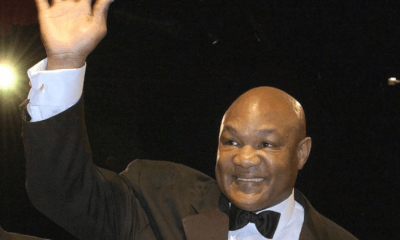
 Featured Articles4 weeks ago
Featured Articles4 weeks agoA Paean to George Foreman (1949-2025), Architect of an Amazing Second Act
-

 Featured Articles4 weeks ago
Featured Articles4 weeks agoBoxing Odds and Ends: The Wacky and Sad World of Livingstone Bramble and More
-
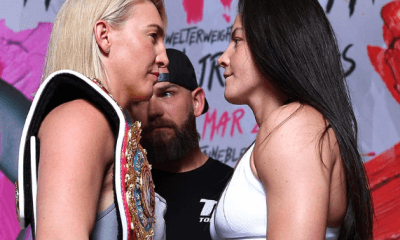
 Featured Articles4 weeks ago
Featured Articles4 weeks agoAvila Perspective, Chap. 319: Rematches in Las Vegas, Cancun and More
-

 Featured Articles3 weeks ago
Featured Articles3 weeks agoRingside at the Fontainebleau where Mikaela Mayer Won her Rematch with Sandy Ryan
-
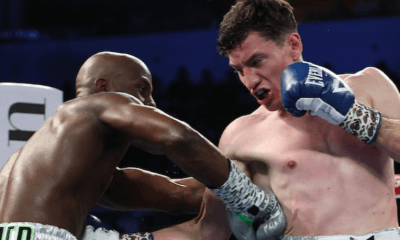
 Featured Articles3 weeks ago
Featured Articles3 weeks agoWilliam Zepeda Edges Past Tevin Farmer in Cancun; Improves to 34-0
-
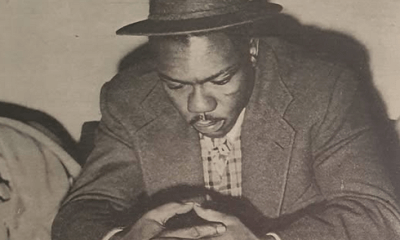
 Featured Articles3 weeks ago
Featured Articles3 weeks agoHistory has Shortchanged Freddie Dawson, One of the Best Boxers of his Era
-

 Featured Articles3 weeks ago
Featured Articles3 weeks agoAvila Perspective, Chap. 320: Women’s Boxing Hall of Fame, Heavyweights and More
-
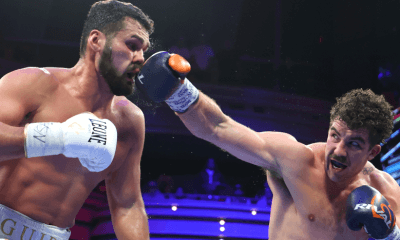
 Featured Articles2 weeks ago
Featured Articles2 weeks agoResults and Recaps from Las Vegas where Richard Torrez Jr Mauled Guido Vianello














